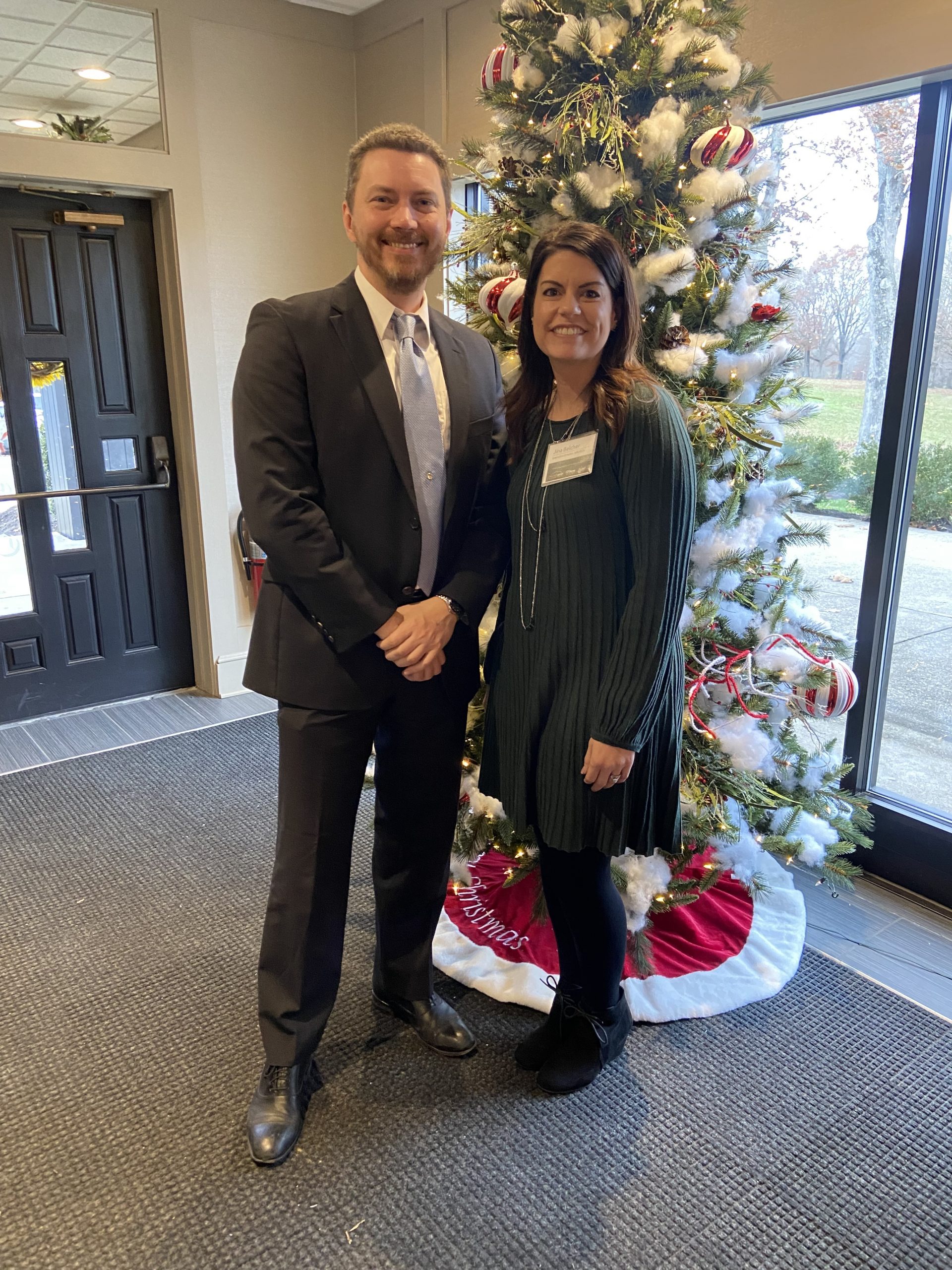The New River Gorge Regional Development Authority (NRGRDA) hosted a comprehensive review and forward-looking snapshot of community and economic development potential in Raleigh, Summers, Fayette, and Nicholas counties at its New River Gorge Economic Outlook Summit.
Representatives from West Virginia University’s College of Business and Economics and Outdoor Economic Development Collaborative (OEDC) joined NRGRDA representatives, including leaders of the West Virginia Hive Network, Active Southern West Virginia, and Country Roads Angel Network (CRAN) in a half-day program attended by more than 90 community leaders, government officials at all levels, and the media.
“It’s always exciting to recognize that the work we’re doing, and partnerships we’re developing, are in line with the state economic priorities.” said Jina Belcher, NRGRDA’s Executive Director. “The new national park, outdoor recreation opportunities, aviation and aerospace progress, new and profitable ways of using coal, and infrastructure improvements among the gateway communities to the region all put us on the national and statewide map in a very positive way.”

John Deskins, Ph.D., Director of the WVU Bureau of Business and Economic Research; Jina Belcher, NRGRDA’s Executive Director
Belcher acknowledged there is much work to be done to recover from COVID-19 as well as the traditional economic issues facing West Virginia, including but not limited to population decline, low labor participation rates, lower higher education attainment, and decline of the traditional coal industry. She welcomed the economic assessment offered by John Deskins, Ph.D., Director of the WVU Bureau of Business and Economic Research.
Deskins’ keynote presentation offered the following observations:
“Our forecast calls for the New River Gorge Area to rebound at a below-average pace but should recover fully from the COVID-19 recession by late 2022. In addition, two of the region’s counties will lag well behind this timeline. Key aspects of our forecast are as follows:
- We expect employment to increase at an average annual rate of 0.6 percent in the region over the next five years. Job growth in the region is expected to be at its strongest between 2021 and 2023.
- Sectors that were hurt the most by the pandemic, namely leisure and hospitality and other services, will see the fastest rate of growth over the next few years as regional and national leisure travel return to normal patterns.
- Manufacturing, professional and business services, the public sector and healthcare are other sectors that will contribute the most to regional job growth over the next five years.
- The coal industry should experience improving conditions over the next two years, while state and federal infrastructure investment provides significant upside potential for construction activity going forward.
- Unemployment is expected to decline slightly over the near term but should see some upward pressure as workforce participation rates begin to rise in the post-pandemic period.
- Per capita personal income is expected to rise at an annual average rate of 1.6 percent over the next five years.
- Population losses are expected to continue in the area during the outlook period, but declines will be smaller compared to the past several years.
Deskins proposed seven economic thrusts for the region moving forward, citing the massive Build Back Better federal investments soon to be available to the state and nation. Other areas he recommended NRGRDA and local leaders consider include:
- Enhancements in human capital (workforce training, health, quality of life)
- Focus on aerospace, plastics and chemicals
- Exploration of Rare Earth Elements, critical materials and carbon products
- Regional economic development and collaboration
- Industrial diversification and entrepreneurship
- Outdoor recreation and improving the state’s image
Led by Belcher, the NRGRDA staff laid out its ongoing efforts to address community and economic development. Judy Moore, who directs both the West Virginia Hive and CRAN, said entrepreneurial activity is heading in the right direction. She said the Hive has served 331 businesses and helped launch 44 businesses in its 12-county service area. Moore added that the organization is currently assisting 74 diverse clients with business advising and technical assistance support on business modeling, financing, human resources, marketing, and other services.
Moore said CRAN, the state’s only certified angel investment network serving all 55 counties, had a meaningful annual meeting Nov. 5, celebrating its capital investment in three businesses – Iconic Air and Endolumik, Inc. of Morgantown, and Mountain Steer Meat Company in White Sulphur Springs. She added that CRAN’s growing investors are open to additional pitches from new start-up companies and existing businesses seeking capital and mentorship.
Jenna Grayson, Manager of Strategic Partnerships at NRGRDA, spoke about the need for the region to develop transformational and transitional partnerships in growing the outdoor economy, enhancing broadband, coal-to-products development, aerospace innovation, and small business growth.
Andy Davis, Manager of Gateway Community Initiatives for NRGRDA, presented priorities for the “gateway communities” leading to the region and new national park and preserve.
Melanie Seiler, Executive Director of Active Southern West Virginia, shared progress in creating a healthier community and outlined ways wellness creates jobs. Her organization has trained more than 100 community captains to improve lifestyle and fitness objectives and provided 32 mini-grants to area businesses for workplace wellness initiatives.
“If economic prosperity were judged solely by enthusiasm, participation, and interest in working together,” said Belcher, “then the New River Gorge region is headed for a very bright future. We have made some significant steps forward in my first year as executive director of NRGRDA, and I am excited about the future.” www.nrgrda.org

